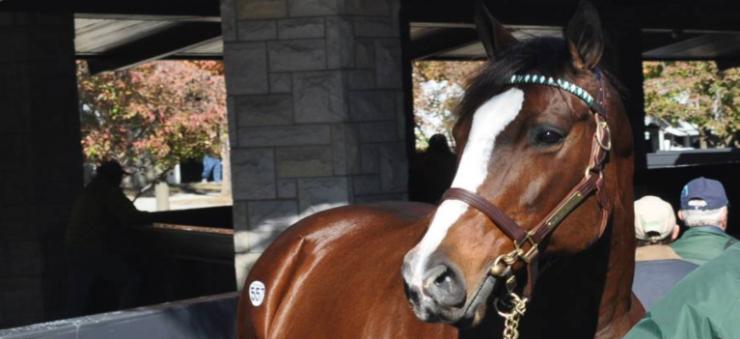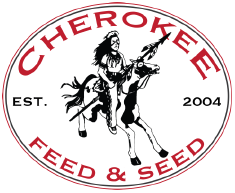 90 Days to Condition, Inside and Out: Legions of talented riders have found a niche turning homely, oft-neglected horses into show-worthy swans. While thorough under saddle training can take years of consistent work, achieving a sales-photo bloom from within can occur in as little as a few months with appropriate care and conditioning.
90 Days to Condition, Inside and Out: Legions of talented riders have found a niche turning homely, oft-neglected horses into show-worthy swans. While thorough under saddle training can take years of consistent work, achieving a sales-photo bloom from within can occur in as little as a few months with appropriate care and conditioning.
Project horses usually come with one or more predictable disadvantages. For example, weight or condition issues, marginal coat health, dubious hoof quality, and a history of negligible veterinary care. An orderly approach to rehabilitation and care will serve these horses well.
Step 1. Assemble the vet-farrier team:
With a sketchy past, project horses often need a thorough once-over by a veterinarian. Pay special attention to the condition of their teeth. Floating, extractions, and other routine dental work can be done by the veterinarian or an accredited dentist. The veterinarian will likely recommend a fecal egg count to determine parasite load and will then advocate a deworming protocol that suits the horse, his new home, and the locale.
Evaluate for common skin diseases, including rainrot, ringworm, and scratches. Establish a treatment plan. Low-level infections such as these often respond well to omega-3 fatty acids. Especially those that have the greatest biological activity, such as docosahexaenoic acid (DHA) and eicosapentaenoic acid (EPA). EO-3 is a rich source of these omega-3 fatty acids.
Note and photograph any lumps or bumps on the legs. Owners have a visual baseline for comparison should an unsoundness or accident arise. Scars, pin-firing marks, soft swellings, and blemishes such as splints, osselets, and ringbone should be documented.
Professional farrier handle hoof concerns. Timely trimming and shoeing will alleviate most of the usual problems. For example, cracks and chipped toes, though a sustained effort might be required to reshape or rebalance hooves that have been habitually mismanaged. Special problems seem to go hand-in-hand with certain types of horses. Off-the-track Thoroughbreds are often diagnosed with Low-heel syndrome, for example. This problem must be attended to over many trimming or shoeing cycles.
In addition to obvious signs, the farrier should be able to give you an idea of the hooves’ general condition. Is the hoof wall resilient, like that of a hard rubber hockey puck, and will it stand up to everyday wear and tear? Is the wall shelly or crumbly? Biotin can improve hoof health; To strengthen hooves, a dose of 20 mg per day is recommended. Bio-Bloom PS (Bio-Bloom HF in Australia) not only provides the suggested amount of biotin but also methionine, an essential amino acid used in keratin production, as well as zinc and iodine.
Step 2. Consult a nutritionist:
From a nutritional standpoint, horses usually come into a new environment with one of two dietary backstories. The new owner either has an exhaustive roster of everything the horse consumed prior to his sale or, more likely in the case of a project horse, the new owner has very little information at all about the previous diet. In either case, nutrition will play a central role in any physical transformation.
“Assuming the horse needs to gain weight, start with a good-quality forage, either pasture or hay, and build upon that,” said Catherine Whitehouse, M.S., nutrition advisor for Kentucky Equine Research (KER). “Introduce pasture gradually. Start with an hour or two and then adding an hour each day. For those fed hay, begin by feeding 2% of body weight each day and then segue into free-choice access. Horse owners often underestimate the caloric capacity of forage in a weight-gain program.”
Many horses that need to bulk up do best on concentrates that provide energy from multiple sources. Meaning calories are derived from a variety of feedstuffs: starch from cereal grains such as oats and barley; fat from vegetable oil or stabilized rice bran; and rapidly fermentable fiber from beet pulp and soy hulls.
“A well-formulated performance feed will likely fit the bill, as might a senior feed not described as low-starch,” explained Whitehouse. “In order the optimize nutrition, concentrates should be fed according to the manufacturer’s instructions, as the lowest feeding rate ensures that minimal nutritional requirements are met. If fed below the recommended rate, the horse will not receive vitamins and minerals required for restoration of health.”
If, on the other hand, the horse is in moderate body condition with no real need to lose or gain weight, offer forage at 1.5-2% of body weight and feed enough of a fortified concentrate to maintain condition, though within the manufacturer’s guidelines.
Horse need to lose weight? Implement various weight-reduction tools will help battle obesity: grazing muzzles, limited turnout in mediocre pasture, time in a drylot, methods to slow consumption of hay, and use of a ration balancer or a vitamin and mineral supplement.
Access to fresh water and a salt block will round out a balanced diet for all horses, regardless of body condition, recommended Whitehouse.
Step 3. Support gastrointestinal health:
Maintaining gastrointestinal health is a prime consideration when elevating a horse’s care. Without a well-functioning digestive tract, horses will be unable to use nutrients supplied to them. One key to gastrointestinal tract health involves gut motility; horse owners can promote gut motility through free-choice access to forage for the majority of the day.
Horse owners are able to nutritionally support two important compartments of the gastrointestinal tract, the stomach and the hindgut, through targeted supplementation. In natural settings, a combination of saliva and a continuous turnover of forage protect gastric mucosa.
Horses managed in a way that includes long stretches without eating, colloquially called “meal feeding,” are susceptible to gastric ulceration. Described as painful erosions in the mucosal lining of the stomach caused by overexposure to acid. A prescription-strength course of omeprazole will heal gastric ulcers, but over-the-counter supplements can keep ulcers from returning.
Hindgut acidosis can also adversely affect weight gain and health. The two primary triggers for hindgut acidosis are overconsumption of starch-laden concentrates or overindulgence in sugar-rich grasses.
When too much starch is eaten, some bypasses the small intestine, where it is normally digested. As a result, it enters the hindgut. As the microorganisms of the hindgut process the starch, pH changes, which can cause damage to the intestinal lining and changes in appetite, feed efficiency, manure, behavior, and performance.
RiteTrac is a proprietary blend of ingredients. It supports total digestive tract health. Targeted to benefit the stomach and the hindgut of the horse, RiteTrac works in two distinct ways. First with its combination of fast-acting antacids and coating agents, RiteTrac quickly neutralizes excess gastric acid. Therefore protecting the stomach lining and restoring the normal gastric environment. Second, RiteTrac contains EquiShure, a time-released hindgut buffer designed to act in the cecum and colon by maintaining optimal pH, thereby reducing the risk of hindgut acidosis. Australian horse owners should seek these research-proven products.
Step 4. Institute an exercise program:
An appropriate exercise program can be planned once a horse’s veterinary, hoof care, and nutritional needs have been tackled. Keep in mind that structured work requires an outlay in energy, so if a project horse has arrived thin and underconditioned, weight gain will be slowed if an exercise component is added immediately. Set performance goals on a reasonable schedule. Provide allowances for normal setbacks. Exercising a horse beyond its conditioning could cause injury.
One way to plan and adhere to a safe, consistent exercise schedule is through the use of KER ClockIt Sport. It’s a smartphone app that takes the guesswork out of conditioning. Horse owners and trainers can condition and feed each horse appropriately for the work they’re actually performing. This is done by tracking an individual horse’s intensity and duration of exercise
A consistent feeding and conditioning program will bring out the best in a resale project. If you’re unsure how to best feed a fledging athlete, contact a KER nutrition advisor for a personal recommendation. Start the process now.
In conclusion, Cherokee Feed & Seed carries a great range of supplements for horse health. Check out our selection here in order to Flip That Horse: 90 Days to Condition, Inside and Out!
Article Source: Kentucky Equine Research
